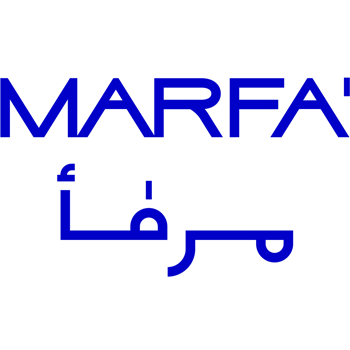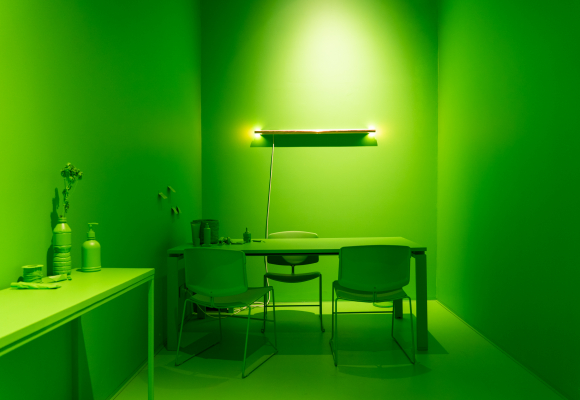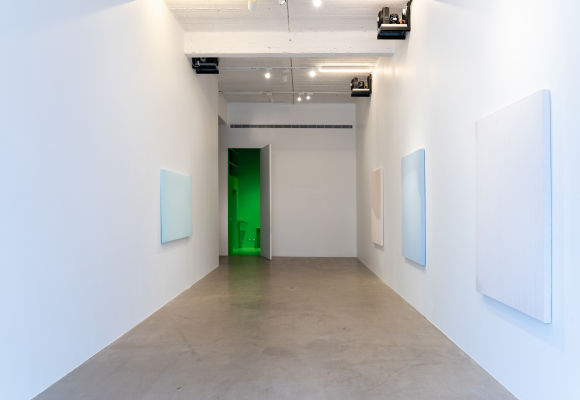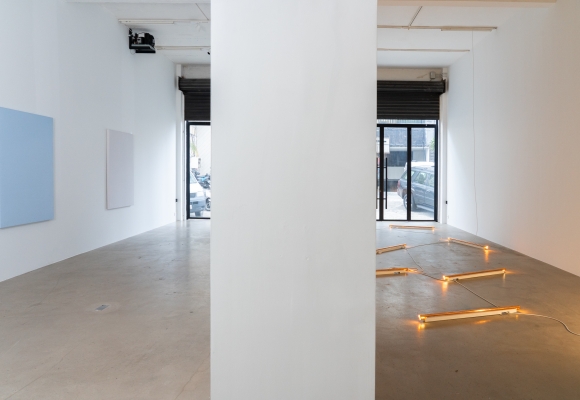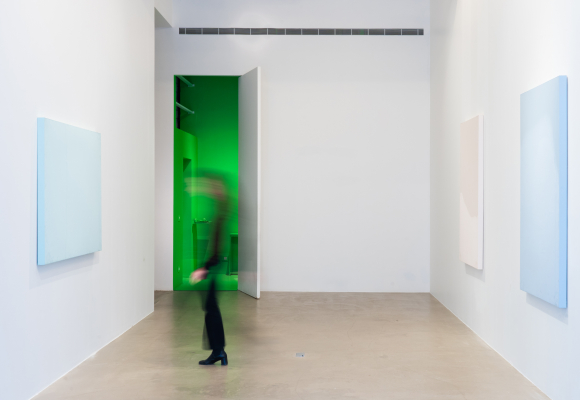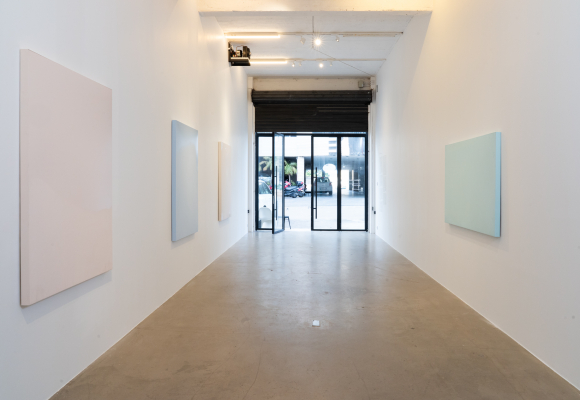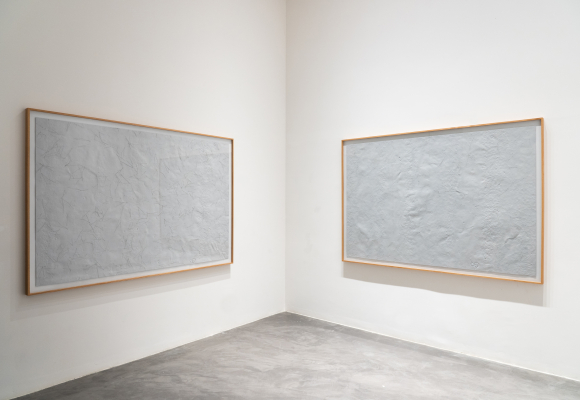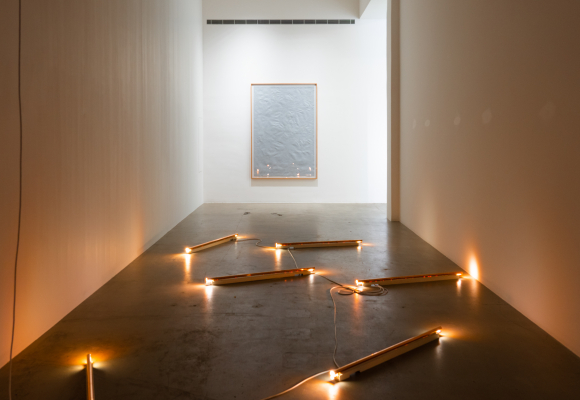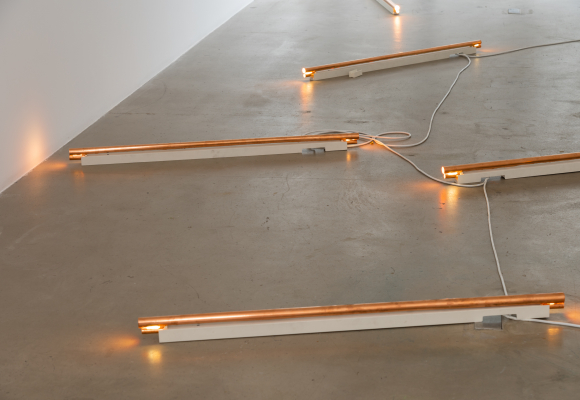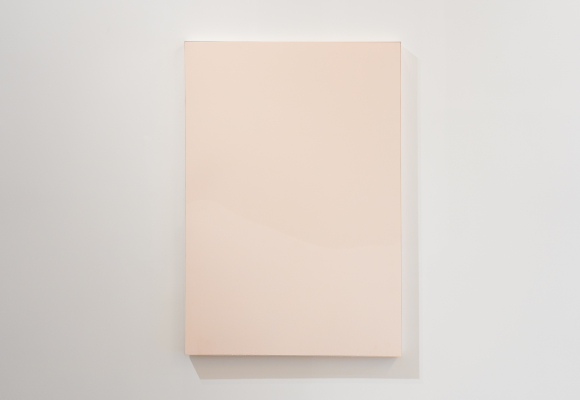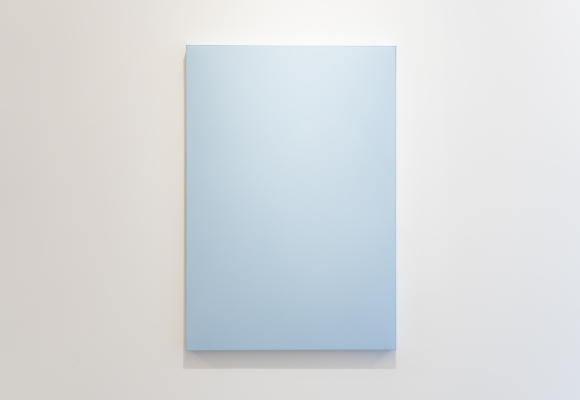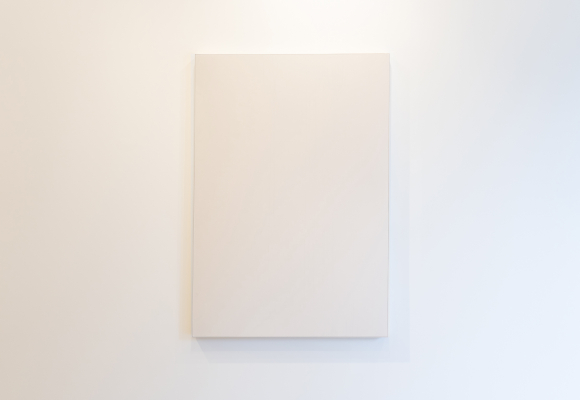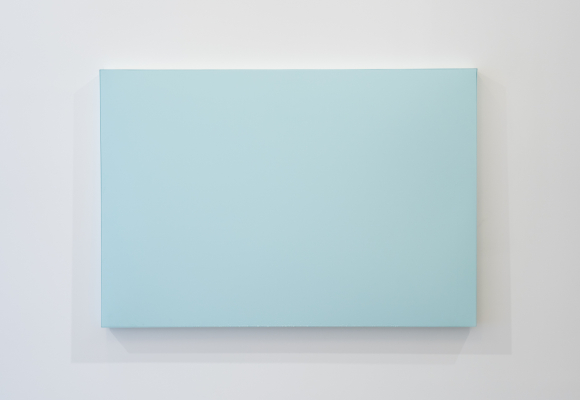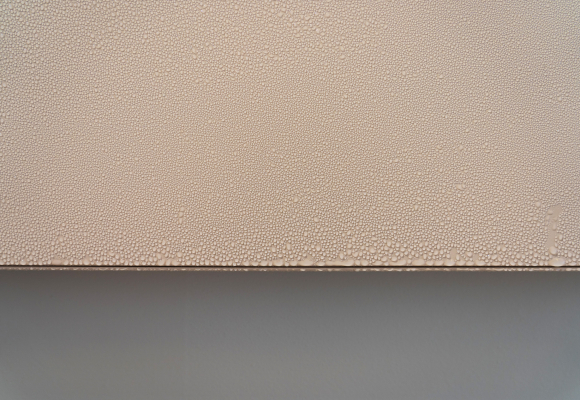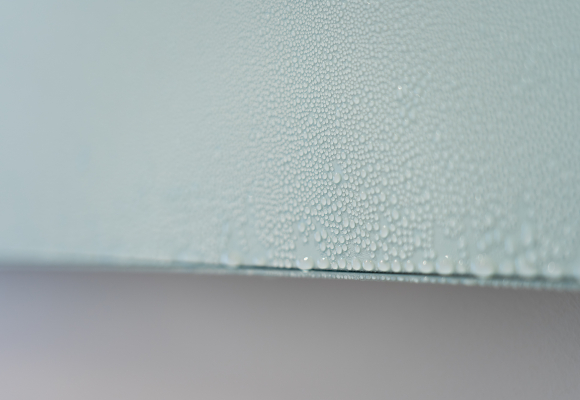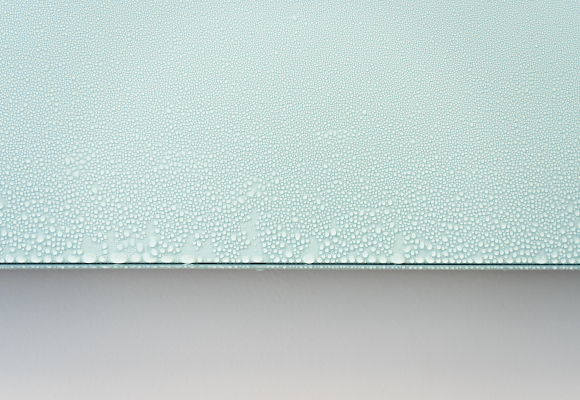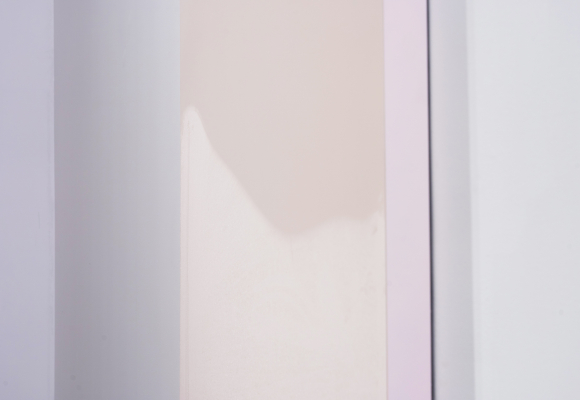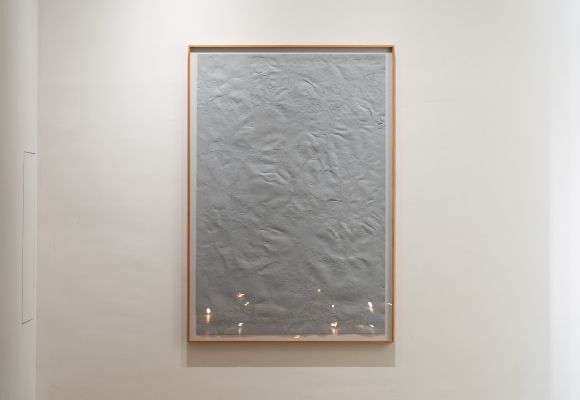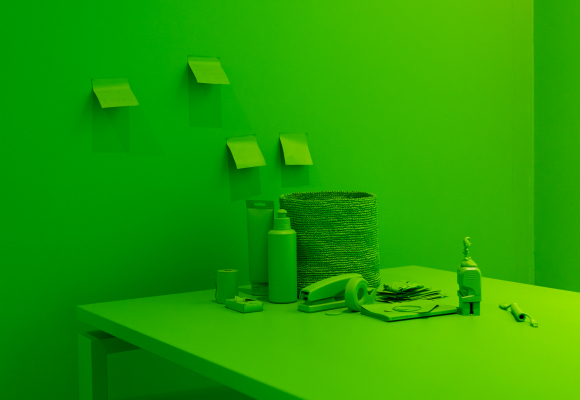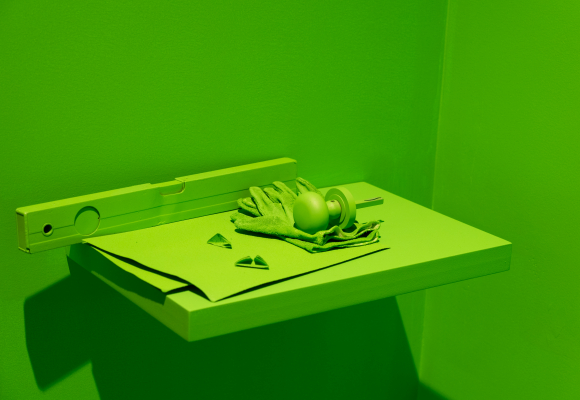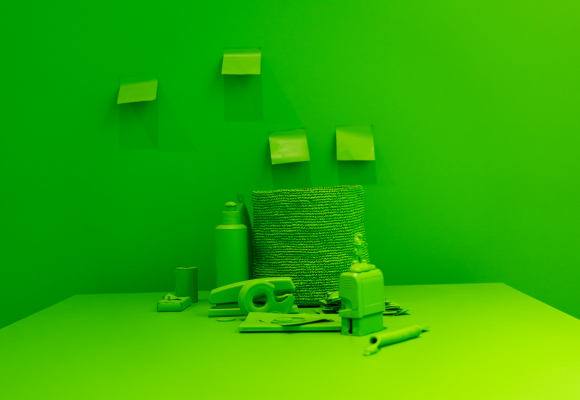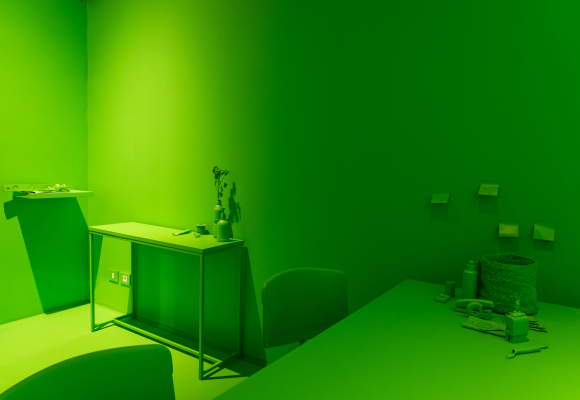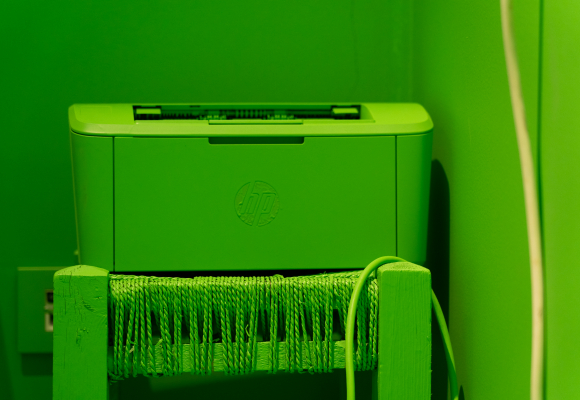Caline Aoun
Are androids covered with electric dew?
8 March 2023 - 28 April 2023
The exhibition explores how artificial mechanisms can change the way we engage with our physical surroundings, which are always evolving through invisible forces. By disrupting the gallery’s very own environment, the different works describe the changing moments from invisible forces to visible and tangible things, and reveal the ambiguity between natural and artificial conditions. Such a disruption is similar to “singularity” in Mathematics, a point at which a surface, a construct, a thing ceases to be “well-behaved” and becomes uncontrollable or chaotic. Keeping this mathematical construct in mind, Caline Aoun’s works explore time and space’s intangible and ever-changing realms, and describe ephemeral points in time at which things become irreversible.
In Artificial Dew, The Machine’s Morning Creation, industrially produced monochrome paintings on aluminium are covered with natural dew and frost. Even this magical natural condition, which is choreographed by the artist using freezer compressors holding the surfaces below freezing point, becomes an artificial condition. By making visible the physical form of humidity in the space, these artificial dew-scapes are a machine’s exploration of the transitory and infinitely transformative nature of our environments.
In Radiant Alchemy, the artist has removed fluorescent tube lights and fixtures from the gallery’s ceiling and has placed them on the floor. The lights have been covered with a rolled copper sheet, a material that is known to contain and conduct heat. By covering the light and letting the heat manifest itself, Aoun is interested in showing light as heat — light as something we can feel rather than see. The work becomes a visual and sensory experience of the transformative power of radiant heat beyond the boundaries of visible light.
Both installations in the main spaces become diagrams of temperature. They both continuously transmute through thermodynamic forces and transfers of heat, enabled by the space itself. They become live sculptures that mirror the conditions of the space, water in the air, heat from the light, bring awareness back to the most essential matters of our lives.
In Vanishing Act, the office space has been almost entirely painted with “green screen” paint, including the desk and the objects that have accumulated with time, sediments as the artist calls them. By painting them in the green chroma key colour, the work refers to the technology of digitally removing or “keying out” that colour, at which point that scene can be dropped onto any digital background. In other words, the artist playfully suggests making them disappear; this imaginary disappearance is an ode to the fragility and transience of the material world. In this installation Aoun was interested in the “kipple” effect Introduced in Philip K. Dick’s novel Do Androids Dream of Electric Sheep? (1968) and the sedimentary nature of spaces, where objects keep on accumulating without human intervention, and become the physical manifestations of entropy.
In Nature’s Time Capsule, three large works of paper explore the part that the natural still holds within our technological environment. The artist placed a silicone cast of a floor outside her studio in the mountains in Lebanon and has kept it for determined periods of time, letting the pine needles from the surrounding pine trees fall onto its surface. After a specific number of days, Aoun would press paper pulp onto the surface, creating an imprint marking the accumulation of foliage specific to a duration. The final result looks like fossil, suggesting a time in the future when paper will become obsolete, and the idea that nature is continuously under threat.
By exploring the verifiable points after which a set or system begins to behave in a different manner, one cannot help but wonder how many points of singularity are currently causing a change that is beneficial or detrimental to us? The exhibition brings us back to the only time-space continuum that is available to us, which is the present moment. When you surrender to what is, the past loses its influence, and the current moment becomes the only thing that matters, a sort of timelessness in the present.
